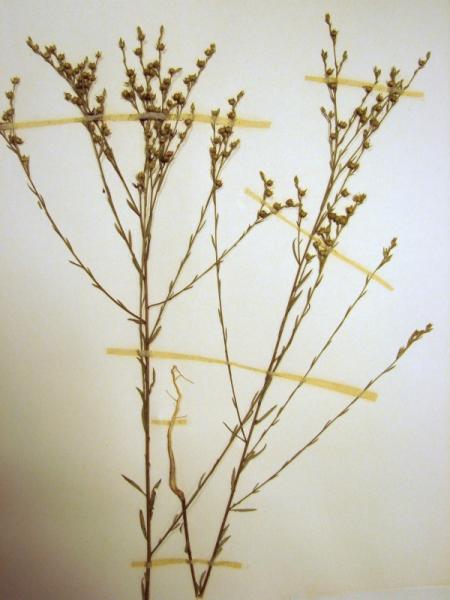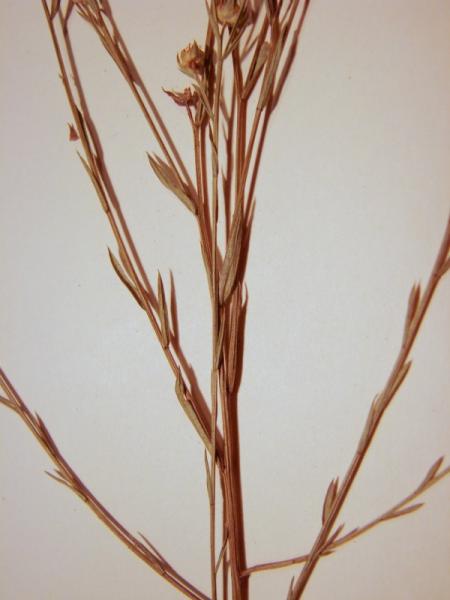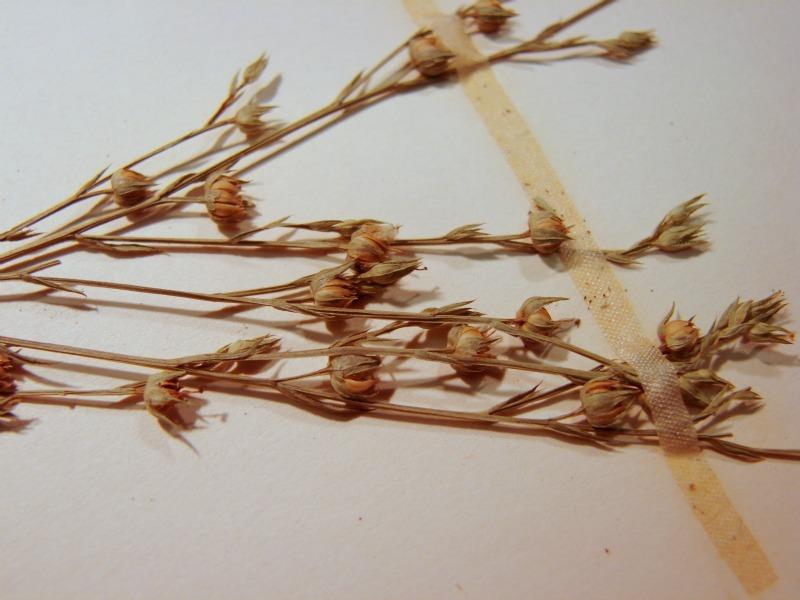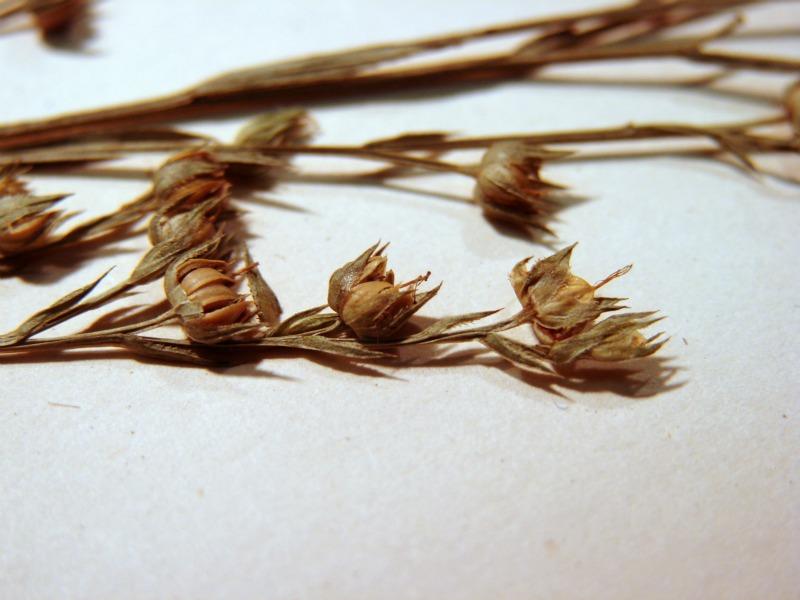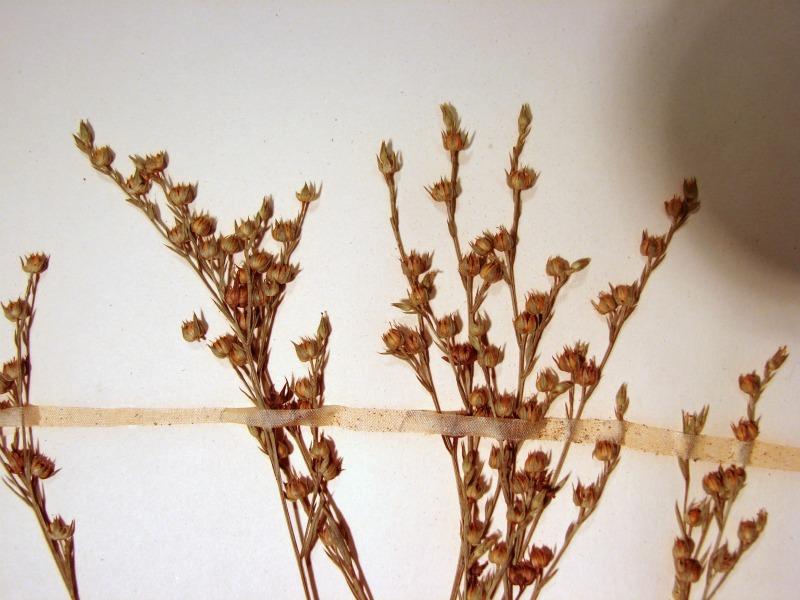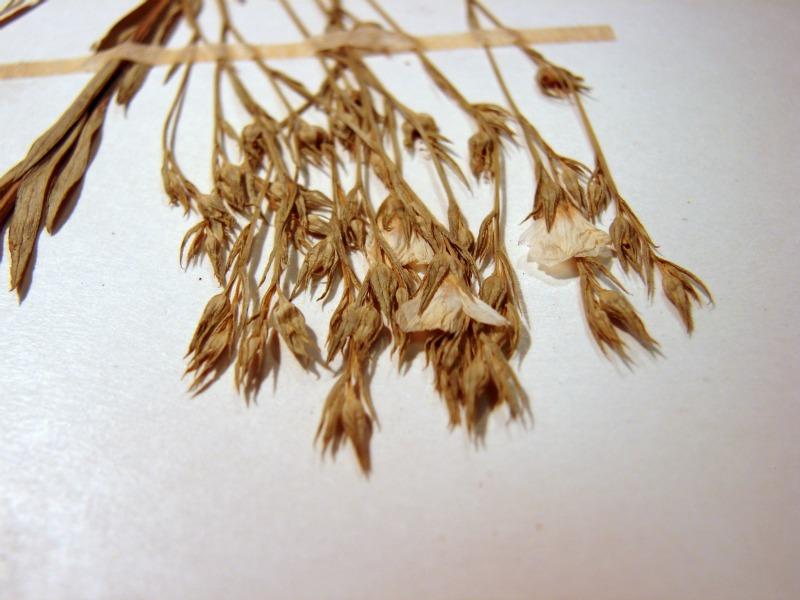Grooved Yellow Flax
Linum sulcatum Riddell
- Class
- Dicotyledoneae (Dicots)
- Family
- Linaceae (Flax Family)
- State Protection
- Threatened
Listed as Threatened by New York State: likely to become Endangered in the foreseeable future. For animals, taking, importation, transportation, or possession is prohibited, except under license or permit. For plants, removal or damage without the consent of the landowner is prohibited.
- Federal Protection
- Not Listed
- State Conservation Status Rank
- S2
Imperiled in New York - Very vulnerable to disappearing from New York due to rarity or other factors; typically 6 to 20 populations or locations in New York, very few individuals, very restricted range, few remaining acres (or miles of stream), and/or steep declines.
- Global Conservation Status Rank
- G5
Secure globally - Common in the world; widespread and abundant (but may be rare in some parts of its range).
Summary
Did you know?
These plants are difficult to find when they are not in flower, because their tall thin stems and narrow leaves blend in well with other wildflowers and grasses. The species name is Latin for grooved and refers to the grooved stems of these plants. It was given that name by John Riddle, a 19th century botanist who received his early training in botany from Amos Eaton at Rensselaer Polytechnic Institute in Troy, New York (Dexter 1988).
State Ranking Justification
There are eight existing populations, but only four of them have populations that contain hundreds of plants. Some smaller populations are threatened by succession, and one population from the 1980s that contained 200 to 300 plants may have been lost to succession. There are 14 historical occurrences, but the likelihood of relocating them is low because many of them were from the fields or roadsides of the first half of the 20th century, that have long since succeeded to forest or have been developed.
Short-term Trends
The short-term trend seems stable with some variability in numbers from year-to-year, but no existing populations have become extirpated.
Long-term Trends
This species was never common in New York, but there has been a decline from historical numbers, as open areas have become more forested and land has been developed.
Conservation and Management
Threats
Populations are threatened by direct development of their habitat, and by succession of open grassland and meadow habitats.
Conservation Strategies and Management Practices
This species needs disturbance to reduce competition from woody plants or more aggressive herbaceous plants, but too much direct disturbance to the plants will reduce or eliminate the population. Its habitat could be disturbed in the non-growing season to open it up for seed germination and colonization, but direct disturbance should be prevented during the growing season.
Research Needs
Determine the ability of this species to recover from succession by seed banking.
Habitat
Habitat
In New York, Linum sulcatum is known from open sites, such as rocky ridges, powerlines, and old fields, typically with limestone bedrock. It is often associated with red cedar (New York Natural Heritage Program 2010). Dry, often sandy soil, prairies, and upland woods (Gleason and Cronquist 1991). Prairies and dry, sandy, open ground (Voss 1985). Dry prairies and calcareous rocks and sands (Fernald 1970).
Associated Ecological Communities
- Calcareous red cedar barrens*
(guide)
A small-patch calcareous rocky summit community occurring on dry, south-facing to southwest-facing slopes and low summits. These sites are characterized by stunted, sparse woodlands with small grassland openings.
- Calcareous talus slope woodland*
(guide)
An open or closed canopy community that occurs on talus slopes composed of calcareous bedrock such as limestone or dolomite. The soils are usually moist and loamy; there may be numerous rock outcrops.
- Limestone woodland
(guide)
A woodland that occurs on shallow soils over limestone bedrock in non-alvar settings, and usually includes numerous rock outcrops. There are usually several codominant trees, although one species may become dominant in any one stand.
- Red cedar rocky summit
(guide)
A community that occurs on warm, dry, rocky ridgetops and summits where the bedrock is calcareous (such as limestone or dolomite, but also marble, amphibolite, and calcsilicate rock), and the soils are more or less calcareous. The vegetation may be sparse or patchy, with numerous lichen covered rock outcrops.
- Successional red cedar woodland
A woodland community that commonly occurs on abandoned agricultural fields and pastures, usually at elevations less than 1000 ft (305 m). The dominant tree is eastern red cedar, which may occur widely spaced in young stands and may be rather dense in more mature stands.
* probable association but not confirmed.
Associated Species
- Antennaria
- Bouteloua curtipendula
- Centaurea
- Danthonia spicata (poverty grass)
- Draba reptans
- Hypoxis hirsuta (yellow star-grass)
- Juniperus virginiana
- Parthenocissus quinquefolia (Virginia-creeper)
- Plantago major (common plantain)
- Potentilla simplex (old-field cinquefoil)
- Rosa virginiana (Virginia rose)
- Schizachyrium scoparium
- Solidago nemoralis
- Toxicodendron radicans
Range
New York State Distribution
This herb is scattered throughout the state, south of the Adirondacks and north of Long Island.
Global Distribution
Yellow Wild Flax's range extends throughout most of eastern and central North America, from Saskatchewan east Quebeck in the north and from Florida to Texas in the south,and including most states and provinces in between.
Identification Comments
General Description
Sandplain wild flax is an upright annual herb with grooved, branched stems reaching 20 to 80 cm. The leaves are alternate, sessile, and narrow, 1 to 2.5 cm long and 1.5 to 5 mm wide, and have a pair of tiny dark glands at the base. The flowers are borne in panicles with slender ascending branches, with pedicels up to 3 mm long. The sepals are persistent and 3 to 6 mm long with gland-tipped teeth, and the petals are yellow and 5 to 10 mm long. The styles are united for about their bottom third of their lengths. The fruit are oval to round capsules 2.5 to 3.5 mm long, at maturity breaking into pairs of sharp-tipped carpels (Gleason and Cronquist 1991).
Best Life Stage for Proper Identification
Flowering and/or fruiting individuals are needed for identification.
Similar Species
All the other yellow-flowered Linum species in New York are perennial, lack glands on their leaf bases, and have entirely distinct styles. L. rigidum, a similar midwestern and western species, has styles united more than half their lengths, and sepals which are deciduous in fruit.
Best Time to See
Flowers June and July and fruits may persist into late November.
- Flowering
- Fruiting
The time of year you would expect to find Grooved Yellow Flax flowering and fruiting in New York.
Grooved Yellow Flax Images
Taxonomy
Grooved Yellow Flax
Linum sulcatum Riddell
- Kingdom Plantae
- Phylum Anthophyta
- Class Dicotyledoneae
(Dicots)
- Order Linales
- Family Linaceae (Flax Family)
- Order Linales
- Class Dicotyledoneae
(Dicots)
- Phylum Anthophyta
Additional Common Names
- Yellow Wild Flax
Additional Resources
Best Identification Reference
Fernald, M.L. 1950. Gray's manual of botany. 8th edition. D. Van Nostrand, New York. 1632 pp.
Other References
Clemants, Steven and Carol Gracie. 2006. Wildflowers in the Field and Forest. A Field Guide to the Northeastern United States. Oxford University Press, New York, NY. 445 pp.
Dexter, Ralph W. 1988. The early career of John L. Riddell as a science lecturer in the 19th Century .The Ohio Journal of Science. v88 (5), 184-188.
Gleason, Henry A. and A. Cronquist. 1991. Manual of Vascular Plants of Northeastern United States and Adjacent Canada. The New York Botanical Garden, Bronx, New York. 910 pp.
Holmgren, Noel. 1998. The Illustrated Companion to Gleason and Cronquist's Manual. Illustrations of the Vascular Plants of Northeastern United States and Adjacent Canada. The New York Botanical Garden, Bronx, New York.
New York Natural Heritage Program. 2010. Biotics database. New York Natural Heritage Program. New York State Department of Environmental Conservation. Albany, NY.
New York Natural Heritage Program. 2024. New York Natural Heritage Program Databases. Albany, NY.
Rhoads, Ann F. and Timothy A. Block. 2000. The Plants of Pennsylvania, an Illustrated Manual. University of Pennsylvania Press, Philadelphia, PA.
Voss, E.G. 1985. Michigan Flora. Part II. Dicots (Saururaceae - Cornaceae). Cranbrook Institute of Science and University of Michigan Herbarium. Ann Arbor, Michigan. 724 pp.
Weldy, T. and D. Werier. 2010. New York flora atlas. [S.M. Landry, K.N. Campbell, and L.D. Mabe (original application development), Florida Center for Community Design and Research http://www.fccdr.usf.edu/. University of South Florida http://www.usf.edu/]. New York Flora Association http://newyork.plantatlas.usf.edu/, Albany, New York
Links
About This Guide
Information for this guide was last updated on: February 23, 2011
Please cite this page as:
New York Natural Heritage Program. 2024.
Online Conservation Guide for
Linum sulcatum.
Available from: https://guides.nynhp.org/yellow-wild-flax/.
Accessed July 27, 2024.
